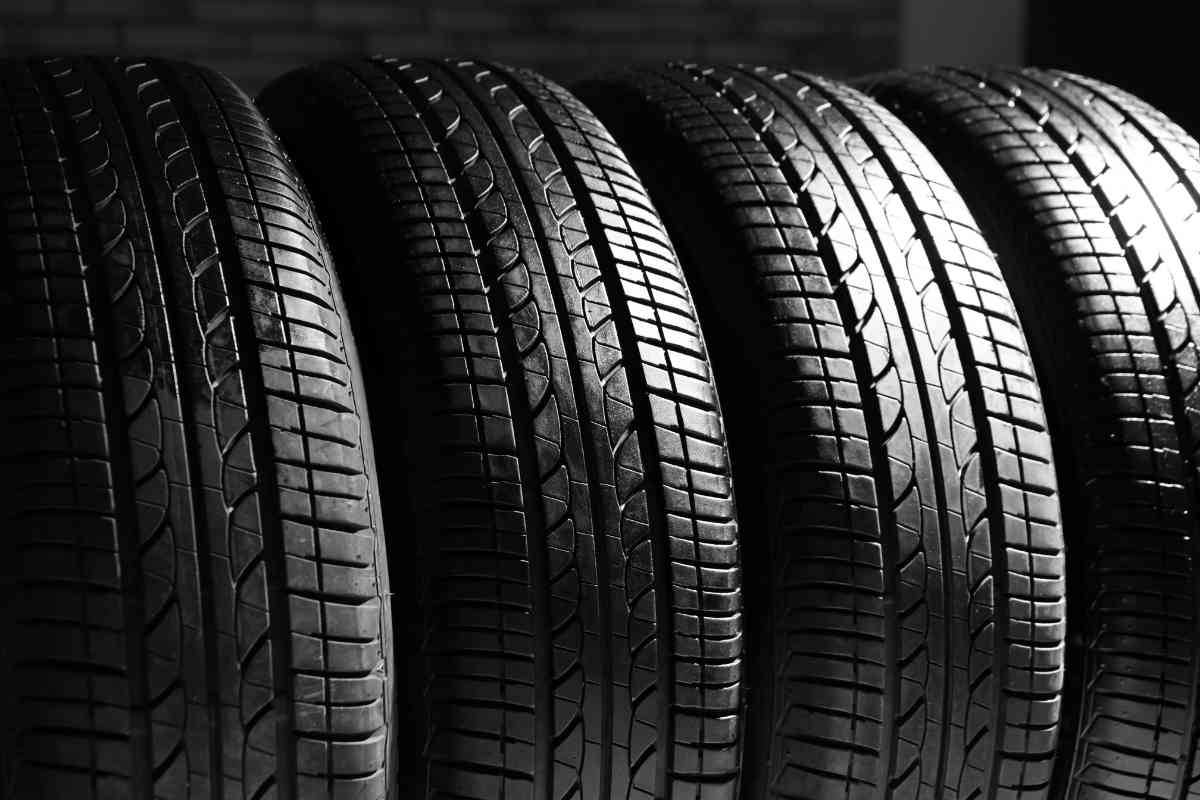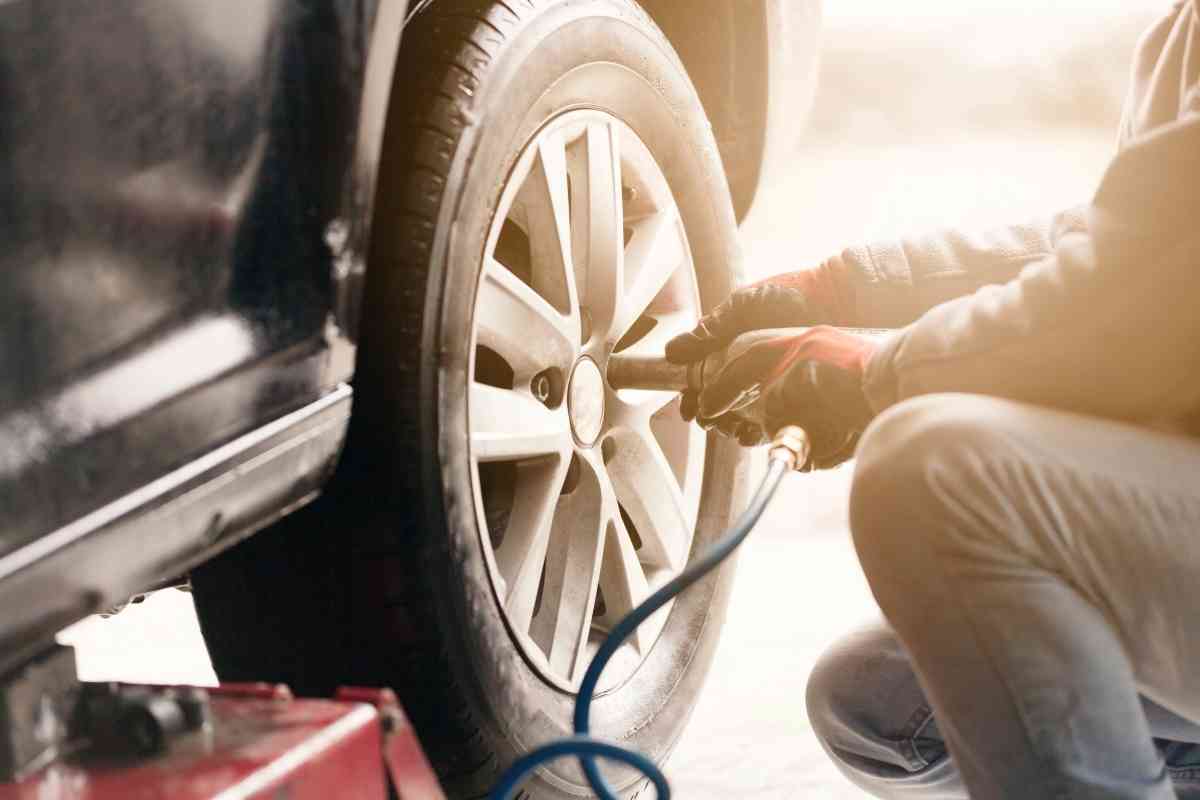What Does DT Mean On BFG Tires? A Quick Answer!
Some of the acronyms on a tire can be vague and leave you wondering what they mean. What does the acronym “DT” mean on BFG tires? BFG tires are well known in the automotive world. They often make changes to their tires based on real-world performance. The change in “DT” is one of those modifications.

What Does DT Mean On BFG Tires?
DT means different treads. The letter meaning symbolizes that BFG changed the type of compound within the tread in response to issues faced by the previous generation of tires. The symbol DT helps tire buyers know which tires are made for which purpose.
Let’s take a closer look and understand why BFG would want to make a special acronym for their tire to indicate that the tire was new and different. Did their previous tires not hold up as planned? What do the rest of the numbers and symbols on a tire mean?
We’ve done plenty of tire research and understand a fair bit about compounds. Tires are each made a bit differently for specific applications, as you are about to learn.
Why did the tread need to change?
BFG makes tires for a range of vehicles in a larger range of conditions. Tires, including those for trucks, are often rated as all-season and expected to work reasonably well in all climates from the hot and dry desert to a light snowfall.
In the case of tires within the “DT” designation, BFG (BF Goodrich) learned that heavier trucks were wearing the treads out too quickly.
Some of the wear outs happened under warranty, and some didn’t, leading to losses and people being unhappy about needing new tires regardless. Tires are meant to last to at least a specific number of miles, making it easy to predict when to change them. Having to change tires soon can reflect badly upon the tire manufacturer – and leads to hopefully improved designs.
What was wrong with the tread?
The tread wasn’t bad, so much as not designed for the right purpose. The previous BFG tires were “three peak rated” meaning that they were designed to work in severe conditions and snow – like many all-terrain tires.
Earning a “three peak” rating means making some compromises when it comes to the compounds that make a tire tread.
A cold weather tire needs softer treads to keep it from freezing nearly solid in cold conditions – it must remain a bit pliable and flexible for comfortable cornering and safe, controlled stopping.
A softer compound also leads to premature, and sometimes less predictable wear. Case in point, most snow tires available on the market do not have a warranty because their use is not predictable, and their compounds are soft because of the requirements of cold weather.

What is the change in “DT” then?
BF Goodrich made the DT tires with a harder compound that could withstand the torque created by a 4WD or rear wheel drive pickup. The previously soft compound would wear quickly with the heavyweight of a truck bed – or even towing, forcing the tread into the pavement more.
There is a bit of a compromise, which is quite common for all season and all terrain tires: The “DT” tires aren’t as good in light snow or on ice, because the compounds are meant more for more temperature conditions.
The benefit BF Goodrich would place on “DT” is that the different tread means a longer tread life for drivers who have a truck or heavy SUV.
Getting very technical, BF Goodrich replaces the original tire tread- which was 2 ply, with a bigger and deeper cushion, which is 3 ply, to better absorb the weight of a heavier vehicle – like a GMC Sierra or bigger.
The bigger cushion area also enables BF Goodrich to make the tread and sipes a bit wider, allowing for blockier edges that will both support vehicle weight and channel out water and mud faster.
When should I consider the DT or the regular tread?
If you are driving a heavier truck, and are less likely to find yourself in the snow, the DT tread might be a better fit for you.
If you anticipate driving more off-road in the near future, you should also consider DT. The tires will probably last longer for those purposes. The regular reads are more apt for the potential of colder conditions but could wear out faster on bigger and heavier trucks.
Which to purchase is ultimately up to your use. Consider the addition of DT to their lineup from BFH like giving drivers an extra option if they want the tire designed for a slightly different purpose.
If you find yourself driving on snow more often – or you move to a colder climate, you might want to consider a different tire entirely. There is a tire built for every purpose!
Do compounds and treads make that big of a difference?
Different treads and compounds are the basis for many changes to types of tire. While many of us use an all season or all terrain tire, they can come in many different, often patent patenting and specifically engineered types of compounds.
These compounds often use varying forms of plastic, rubber, and silica to make the tire more sticky and more flexible for certain vehicle types like sports cars. More common treads are meant to stay stable on wet and dry surfaces with occasional use in keeping a car under control in winter.
Since tire manufacturers can’t change too much by increasing or decreasing tire size, the use of different treads and rubbers are the foundation for giving your vehicle the performance and feel you want.
How does different compound and tread impact gas mileage?
Probably not. The tire size and weight can make a vehicle work a bit harder and burn more gas, but the difference between BFG tires with or without DT names won’t impact gas mileage.
There are lots of symbols and letters on my tire. What do they mean?
The rest of your tire can be as confusing as “DT.” Let’s start with the basics
Reading from left to right, you should first see a letter like “P” or “LT”. P means passenger, meaning the tire is meant for a small vehicle. LT can mean either SUV or a truck, and stand for light truck.
The next three digit number is the width of the tire, in millimeters. The number is almost ways over 150.
The next, smaller number is the ratio of the sidewall height to the width of the tire.
The smallest number is often between 15 and 33 and represents the size of the tire, diagonally, in inches.
You might also see an “M + S” depending on the tire and what it’s rated to drive through, like Mud and Snow.
“DT” will be closer to where the BF Goodrich tire tells what you model of tire you are looking at, because it is not a measurement of anything specific.
fJust like in BFG, some manufacturers use their own codes to designate a new generation of tire – you’ll want to look these up on the Internet – and there are a lot of them! You are better off using a tire finder like through TireRack to determine exactly which designation of tire fits you best.
